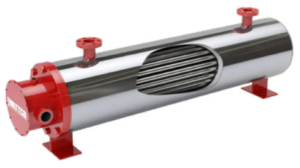5 Factors to Consider When Buying a Circulation Heater
Last updated on April 30th, 2025 at 06:49 am
Circulation heaters offer industrial businesses an efficient means to heat liquids and gases. But the efficiency of the circulation process is only reliable if the right choices are made before buying a heater and its accompanying components. What do these choices involve? This post will examine five factors business owners need to consider while deciding what circulation heater to choose.
1. Industrial application of circulation heaters
Circulation heaters are ubiquitous in the industrial sector. Natural gas processing plants, hydrocarbon refineries and power generation plants all use circulation heating for specific processes.
These heaters can heat liquids and gases ranging from nitrogen to oils, and hydrogen water, hence why they are an industry staple. However, choosing the right circulation heater for your application depends on its heating requirements.
Circulation heater buying factors
- Minimum and maximum operating temperatures and airflow
- Composition, viscosity, corrosivity and thermal properties of the target compound to be heated
- Pressure requirements
- Intended location of the heater (inside or outside)
- Intended mounting orientation (horizontal or vertical)
- Available power
- Environmental conditions (i.e. temperatures, weather/climate)
- Temperature controls and sensor requirements
The most suitable circulation heater for your industrial application will meet the requirements of all the factors above.
2. Watt density
A significant reason why circulation heaters need careful consideration before purchasing is due to watt density. Watt density refers to how much heat will emanate from the heating element. It’s calculated by the heating element power divided by the heated surface area of the element.
The purpose of calculating watt densities is to help determine the lifespan of a circulation heater, its physical size and the elements used. Factors that affect watt density include:
- A circulation heater’s operating temperature
- Corrosion potential of an industrial application
You must choose a watt density that will allow for a safe operating temperature while maintaining the desired integrity of your target fluid. Engineers typically recommended circulation heaters with lower watt densities, but developments have made it possible to use higher watt densities without reducing the lifespan of a circulation heater. When calculating your desired watt density, you can select a circulation heater with a predetermined wattage or have one custom-made to deliver that output.
3. Construction materials in circulation heaters
The materials used in a circulation heater can work for or against your application. Different materials offer varying levels of protective ability as well as performance enhancement. Typically, you want your heater to contain materials that can resist elements such as corrosion and oxidation. Also, it’s ideal for the material in a heater to enhance its ability to heat your target fluid or gas. Some materials, of course, meet these requirements better than others.
Standard materials used for circulation heaters
- Stainless steel
- Inconel®
- Incoloy®
- Nickel
- Copper
- Steel
Deciding which material is ideal for you boils down to the required temperatures and pressure settings of your target fluid. However, cost and safety are also important to consider.
4. Intended position and location
The physical placement of a circulation heater often matters as much as the type of heater itself. Certain positions and locations can improve efficiency (which can reduce costs), among other benefits. The ideal placement for a circulation heater will depend on the space available in your facility. But specific orientations are advantageous depending on your target medium.
For example, when heating liquids, placing a circulation heater horizontally with its inlet and outlets facing up is beneficial. However, to ensure that your heating elements remain submerged, you can set the heater in a vertical orientation. Aside from space, your main objective will dictate the orientation of your circulation heater.
5. Temperature and operating controls
Adding appropriate temperature controls allows you to control a circulation heater more efficiently. The ideal controls will allow you to make quick and accurate adjustments to the temperature of your target fluid or gas. A common choice for temperature controls is silicon-controlled rectifiers (SCR), which allow operators to retain precise control of their target medium’s temperature.
Generally speaking, the controls on a circulating heater sit on the outlet of the heater. That allows operators to provide feedback to process for more accuracy. Also, to prevent temperature overwhelm due to poor flow or sludge, it’s ideal to keep a temperature sensor on the sheath of the heating element. Again, the best placement of your temperature controls depends on the fluid you’re heating.
Choosing circulation heaters for your application
For many processes, circulation heaters can maximize your heating operations, improving the quality of your product and reducing production costs. But the function of a circulation heater must meet the form of your application.
Our representatives at Wattco can help you determine which circulation heaters best suit your industrial application. They work alongside engineers and scientists who construct these units and can help you identify the exact configurations needed to meet your industry’s requirements. Get a quote or request more information about a circulation heater today.
